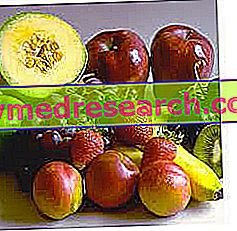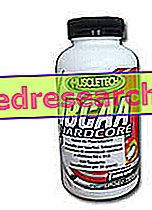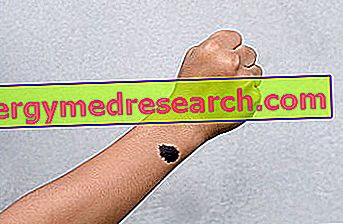Vitamins
Vitamins are essential molecules for life; these are micronutrients to be taken in very small quantities, especially when compared to energy macronutrients;

NB. Both deficiency (hypovitaminosis or avitaminosis) and excess (hypervitaminosis) can be harmful to health.
Sensitivity to light
Vitamins can be classified by different methods; the most common are undoubtedly the association with a letter of the alphabet (frequently misunderstood as a noun that names the vitamin in question) and solubility (in water or fatty acids - fat-soluble or water-soluble). However, the chemical-physical characteristics of the vitamins are many and each of them can represent a good classification criterion; thermolability and pH sensitivity are a typical example. In the following paragraph, an aspect of the vitamins (in my opinion) that is less known than the previous ones will be analyzed: light compatibility or photosensitivity .
The reader may wonder: Why should sensitivity to light be the object of nutritional interest?
The answer is quite simple; light sensitivity is a characteristic that affects (in a relative manner) the functional integrity of vitamins in food; in simple terms, the photosensitive vitamins that are exposed to light may not "survive" in necessary quantities. Obviously, consuming mainly foods having a good part of vitamins degraded by light is not a good nutritional habit.
Photosensitive vitamins
For convenience, in the description of the photosensitive vitamins, the various molecules can be cited with their corresponding letter in the alphabet; furthermore, for questions of methodological correctness, they will also be divided by solubility.
Photosensitive water-soluble vitamins
- Vitamin C: ascorbic acid is by far the most reactive vitamin; it suffers oxidation and high temperatures negatively, but what not everyone knows is that it is also a photosensitive molecule. Keep foods with vitamin C for a long time (FRESH fruits and vegetables such as oranges, lemons, grapefruit, kiwis, strawberries, melons, tomatoes and cabbage) exposed to light (classic example: orange juice) compromises their integrity; therefore, wishing to avoid this degradation (but taking note of the fact that vitamin C is also highly oxidizable), it would be advisable to use dark glass bottles or NON-transparent containers.
- Vitamin B2: riboflavin is contained mainly in foods of animal origin: liver, eggs, milk and fish, as well as in whole grains and mushrooms. It is thermolabile and also photosensitive, therefore, in addition to the reduction of its content due to cooking, if exposed excessively to light, foods containing vitamin B6 suffer a further impoverishment of its content. However, an excellent food source of riboflavin is animal milk, especially fresh milk (quickly pasteurized HTST [High Temperature Short Time] - 72 ° C for at least 15 seconds). NB . the typical opalescence and the "relatively low" heat treatment favor its maintenance despite its thermolability and photosensitivity.
- Vitamin B6: pyridoxine, pyridoxal and pyridoxamine are photosensitive and are mainly introduced with foods of vegetable origin (whole grains, spinach, peas and bananas) and with the liver. In addition to protecting food from light, there are no other special indications other than to always consume fresh food and NOT long stored, even if refrigerated or frozen.
- Vitamin B8 or H: biotin is contained in egg yolk, liver, kidney, green vegetables and meat; being photosensitive and thermolabile, the main sources from which it is obtained in an intact form are mainly the vegetable and fresh ones, therefore not long conserved.
Photosensitive fat-soluble vitamins
All the fat-soluble vitamins (vit .: A, D, E, K and F) are photosensitive and all, except for D (which resists up to 125 ° C), also thermolabile. The fat-soluble vitamins are molecules whose intake correlates to dietary lipids, therefore they are excellent sources of fat-soluble vitamins: egg yolk, wheat germ, vegetable oils, seeds, oilseeds and dried fruit in general, seed oils, liver, fish from the cold seas and fish oil, milk and derivatives. Among all, the two fat-soluble vitamins that have the most difficult to reach recommended ration are vitamin D (ergocalciferol and colecalciferol), and F vitamins or polyunsaturated essential fatty acids (AGE or PUFA - omega6 series [linoleic acid, γ-linolenic acid, diomo-γ-linolenic acid and arachidonic acid] and omega3 [α-linolenic acid, eicosapentaenoic acid and docosahexaenoic acid]).
In particular, the F vitamins are photosensitive and highly perishable, therefore, the intake of these nutrients with food should never be neglected; essential fatty acids are present above all in vegetable oils from oil seeds or from soy and in cold-sea fish. It is therefore advisable to preserve these products in order to limit their exposure to light and possibly consume them relatively quickly (given the very low shelf life that characterizes polyunsaturated fatty acids).
On the other hand, the presence of vitamin D in foods is extremely low; it is mainly found in: milk, yolk, tuna, salmon and cod liver oil, but in modest concentrations that often require supplementation with fortified foods or over-the-counter products.



